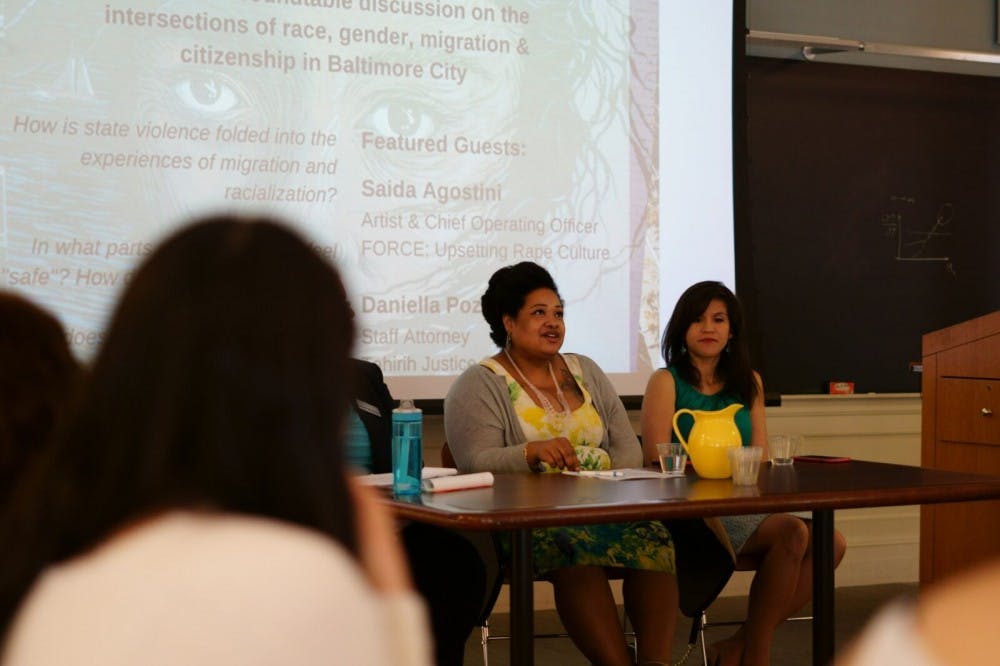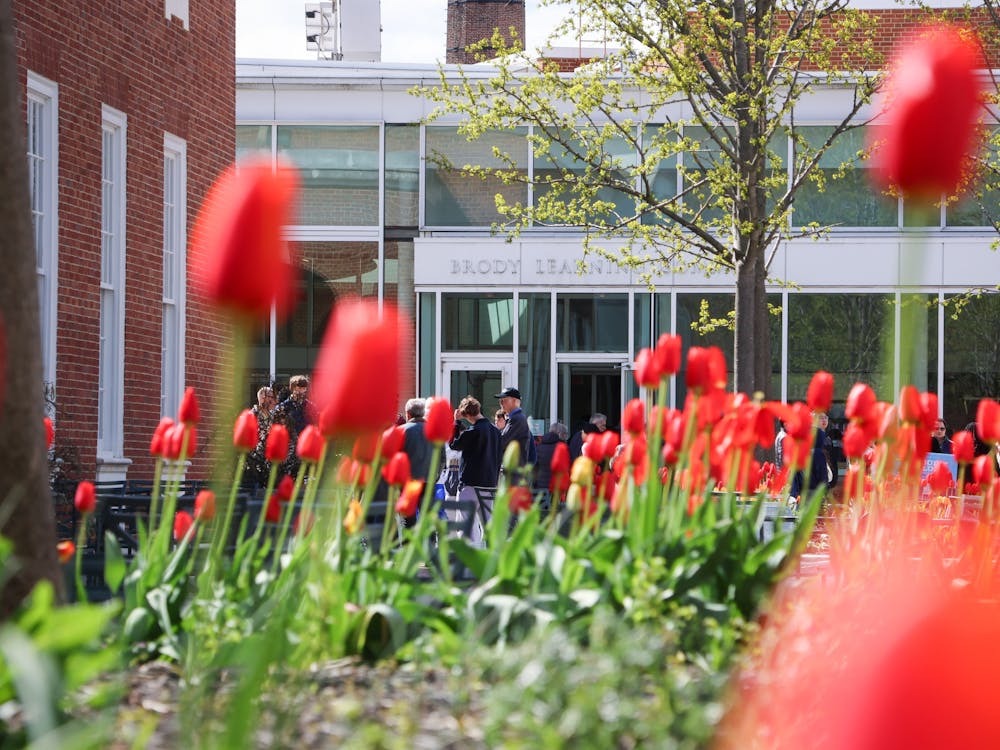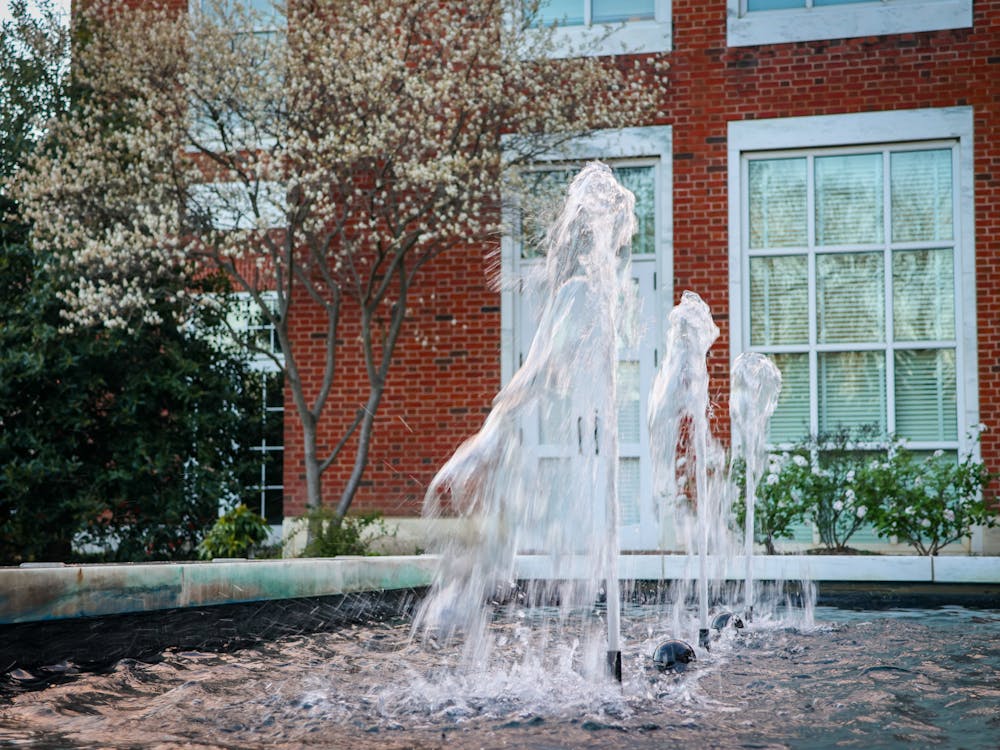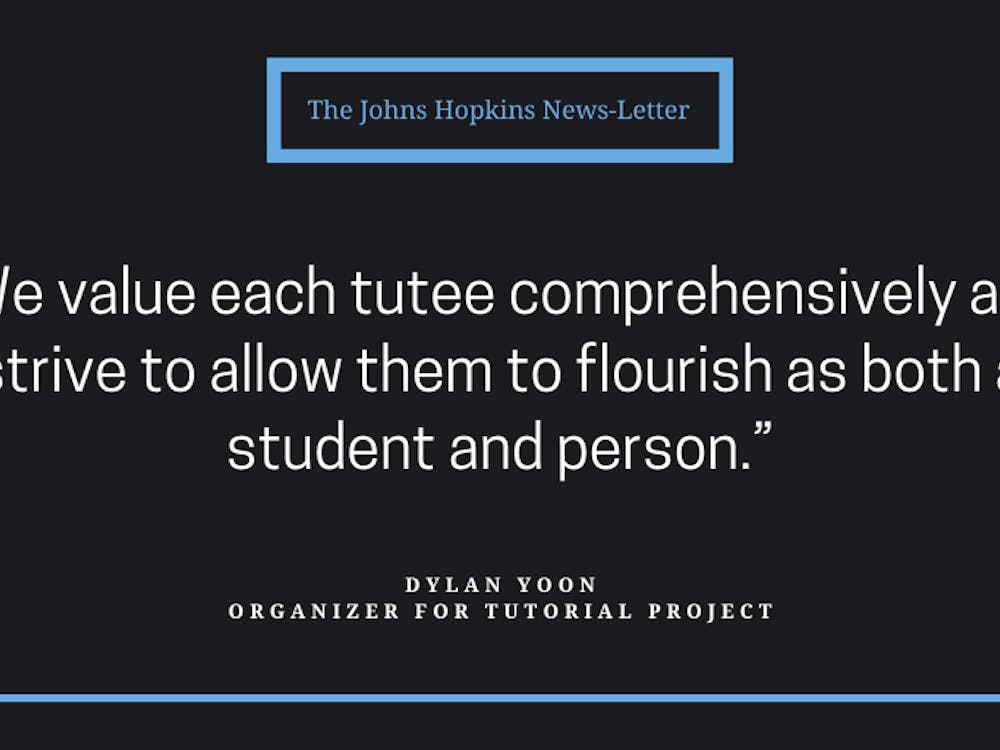Students, professors and guest speakers gathered for a roundtable discussion to share their experiences living in Baltimore and discuss the University’s role in the city.
The event, “Living ‘Hopkins’ in Baltimore: An Immigrant City,” took place on Friday, April 28, in Gilman. It was co-hosted by the Program in Racism, Immigration and Citizenship and the Program for the Study of Women, Gender and Sexuality.
Major themes of the discussion included the University’s relationship with Baltimore and how race, gender and citizenship intersect to affect one’s experiences in the city and beyond. Participants also deliberated over how the University may both benefit and undermine minority groups in the city.
Guest speaker Saida Agostini, the chief operating officer of FORCE: Upsetting Race Culture, an artistic activist organization, suggested that marginalized communities in Baltimore are skeptical about the University’s motives.
“If you are an organization or collective and are trying to do work in black communities and you’re associated with Johns Hopkins, people are going to look at you sideways,” Agositini said. “How is it we can provide resources to organizations that isn’t about Johns Hopkins always getting credit?”
Agostini expressed concern regarding the relationship Hopkins researchers have with Baltimore.
“What we were witnessing over and over again was the increasing number of Hopkins researchers who had no connection to the community coming out [and] wanting to do research within the communities,” she said.
In addition, Agostini said that the majority of Hopkins researchers she has encountered seem focused on ways they can profit off the community, rather than contribute to it.
On the other hand, guest speaker Daniella Pozzo, an attorney who works with undocumented immigrants, spoke positively of the University’s efforts to engage with the Latinx community.
“A lot of my clients go to the Latino clinic, available through Hopkins,” she said. “There’s a lot of wonderful support in the Hopkins community for immigrants.”
Clara Han, associate professor in the department of anthropology, questioned whether the University was more “advocate” or “parasite.” She also questioned the University’s ability to foster civic engagement among faculty.
“When I first moved here, what was striking to me was this Hopkins bubble,” Han said. “I found it quite suffocating. There’s this perimeter where many of the faculty live, very close to the campus. You actually don’t have any relationship to the city at all.”
She went on to say that faculty could teach and conduct research without having to engage with Baltimore beyond the University’s vicinity.
“Many of the faculty would say: ‘I don’t live in Baltimore. I live in Hopkins,’” she said.
Han asked participants where in Baltimore they felt safe and what safety meant for them. She also asked how their notions of safety may be affected by racial biases.
Erin Chung, associate professor in the department of political science, said that the emergency campus alerts the University sends via email contribute to a widespread sense of unease.
“It’s always about ‘oh, I was there last night, I shouldn’t be walking there again,’” she said. “It’s that constant feeling that there’s all this danger around us. That’s the message these crime alerts end up giving us.”
Chung, whose husband is African-American, said that the suspect descriptions make her fear for her husband’s safety. She noted that the ethnicities of non-black suspects are not usually pointed out.
“The profile of the suspects are always the same,” she said. “Black male. Medium build. Could be anybody. Reading these descriptions of a black male, it’s always with a sense of uneasiness. He’s probably a suspect too.”
Han also criticized the crime alerts for being racialized and creating a sense of dread amongst student and faculty. She went on to condemn the University for contributing to gentrification.
“Faculty think they can only buy houses in certain areas,” she said. “Or the University says you can get a loan and live here and work but you have to buy an extremely run down house and put all your, sweat and equity into it and participate in the process of gentrification to displace everybody else who would be your neighbor. It was just terrible.”
Han commented on her experiences with racial discrimination while living in Baltimore.
“These kids that I knew started spurting out all of these horrible racist stuff to me. ‘Chink, go home. Konichiwa!’ Somebody threw a stone at me,” she said. “I’m like, what is it going on here that made it different so that we couldn’t be neighbors anymore?”
She added, however, that people were extremely polite after the 2016 presidential elections.
“Right after Trump was elected, it was so interesting,” she said. “I’m walking in the park and other minorities would be like, ‘hey, how are you, are you okay?’ Everybody would be extra nice. And the white people had to be extra, extra nice.”
Guest speaker Viviana Westbrook, an attorney at the Esperanza Center, which provides resources for immigrants, noted how Trump’s win made her family and friends more vocal about political issues.
Westbrook, who grew up in Mexico with a white American father and a Mexican mother, said that the paternal side of her family began expressing anti-undocumented immigrant sentiments.
“They made a whole comparison where they said when I invite somebody over to my house, if I invite someone over for dinner they’re welcome to my food, but if you show up uninvited then I am welcome to shoot you,” she said.
Shuo Yu Lai, a visiting student from Singapore, said that the discussion expanded his knowledge about the city.
“Since I’m a visiting student here, I spend more time in Hopkins rather than Baltimore,” he said.
He noted that, compared to Baltimore, Hopkins had a relatively small African-American demographic.
“I was certainly not aware that Baltimore has a majority black population,” Lai said.
Overall, he felt that the event was a good opportunity to reflect on issues pertinent to Baltimore.
“It’s good to be able to discuss issues about the city instead of just the university,” he said.























Please note All comments are eligible for publication in The News-Letter.